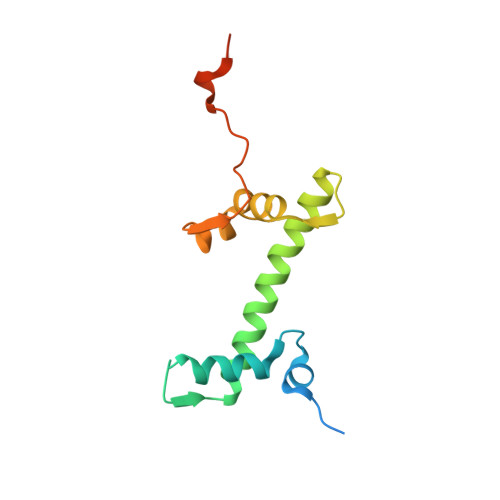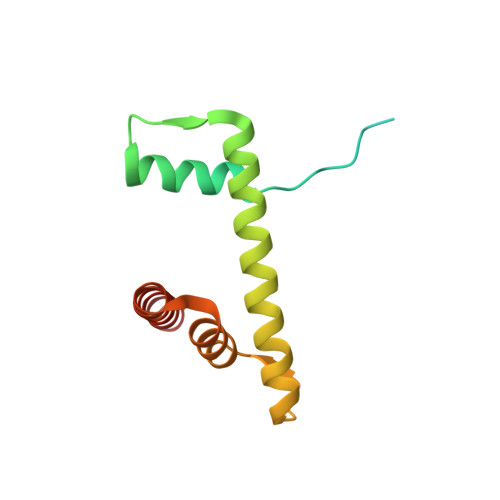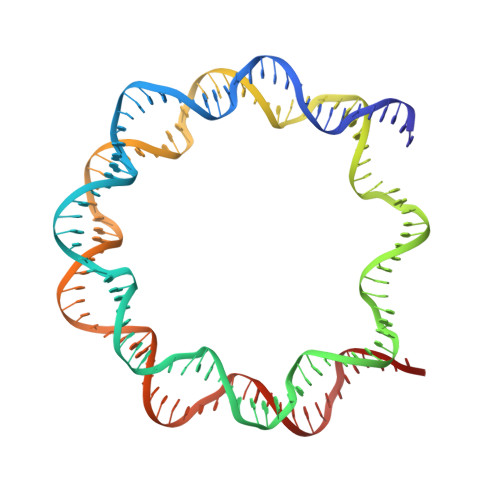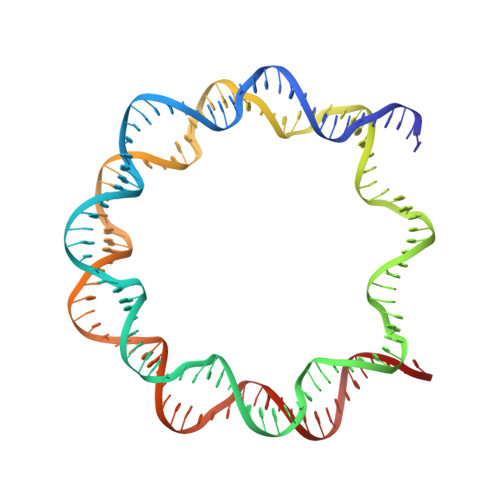Intra- and inter-nucleosomal interactions of the histone H4 tail revealed with a human nucleosome core particle with genetically-incorporated H4 tetra-acetylation
Wakamori, M., Fujii, Y., Suka, N., Shirouzu, M., Sakamoto, K., Umehara, T., Yokoyama, S.(2015) Sci Rep 5: 17204-17204
- PubMed: 26607036
- DOI: https://doi.org/10.1038/srep17204
- Primary Citation of Related Structures:
5AV5, 5AV6, 5AV8, 5AV9, 5AVB, 5AVC - PubMed Abstract:
Post-translational modifications (PTMs) of histones, such as lysine acetylation of the N-terminal tails, play crucial roles in controlling gene expression. Due to the difficulty in reconstituting site-specifically acetylated nucleosomes with crystallization quality, structural analyses of histone acetylation are currently performed using synthesized tail peptides. Through engineering of the genetic code, translation termination, and cell-free protein synthesis, we reconstituted human H4-mono- to tetra-acetylated nucleosome core particles (NCPs), and solved the crystal structures of the H4-K5/K8/K12/K16-tetra-acetylated NCP and unmodified NCP at 2.4 Å and 2.2 Å resolutions, respectively. The structure of the H4-tetra-acetylated NCP resembled that of the unmodified NCP, and the DNA wrapped the histone octamer as precisely as in the unmodified NCP. However, the B-factors were significantly increased for the peripheral DNAs near the N-terminal tail of the intra- or inter-nucleosomal H4. In contrast, the B-factors were negligibly affected by the H4 tetra-acetylation in histone core residues, including those composing the acidic patch, and at H4-R23, which interacts with the acidic patch of the neighboring NCP. The present study revealed that the H4 tetra-acetylation impairs NCP self-association by changing the interactions of the H4 tail with DNA, and is the first demonstration of crystallization quality NCPs reconstituted with genuine PTMs.
Organizational Affiliation:
RIKEN Systems and Structural Biology Center, 1-7-22 Suehiro-cho, Tsurumi, Yokohama 230-0045, Japan.





















